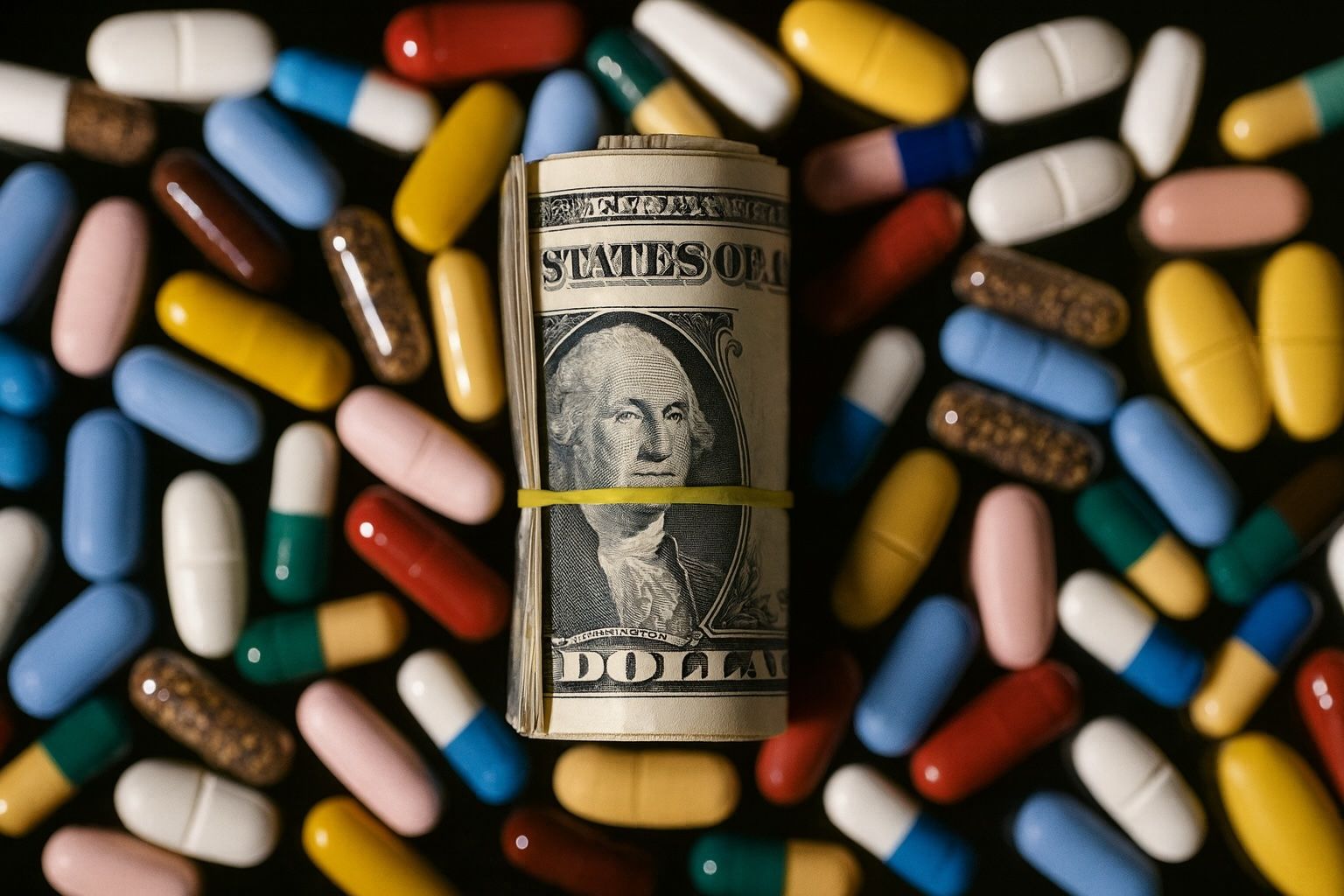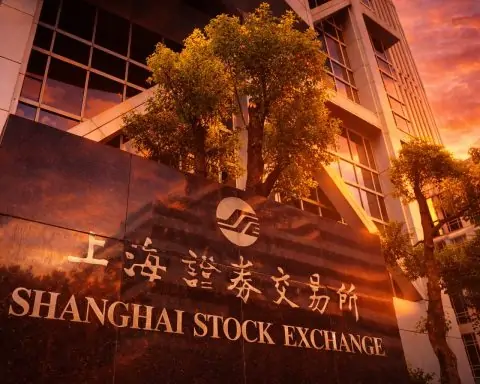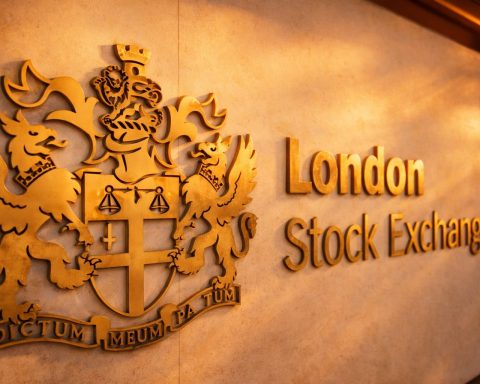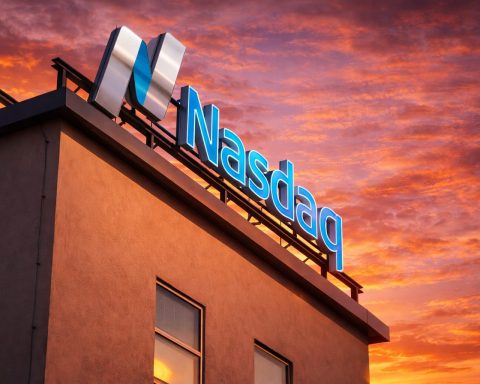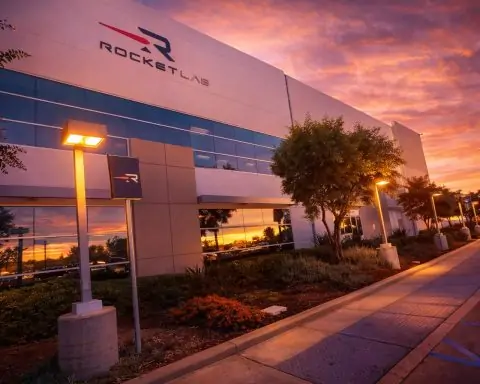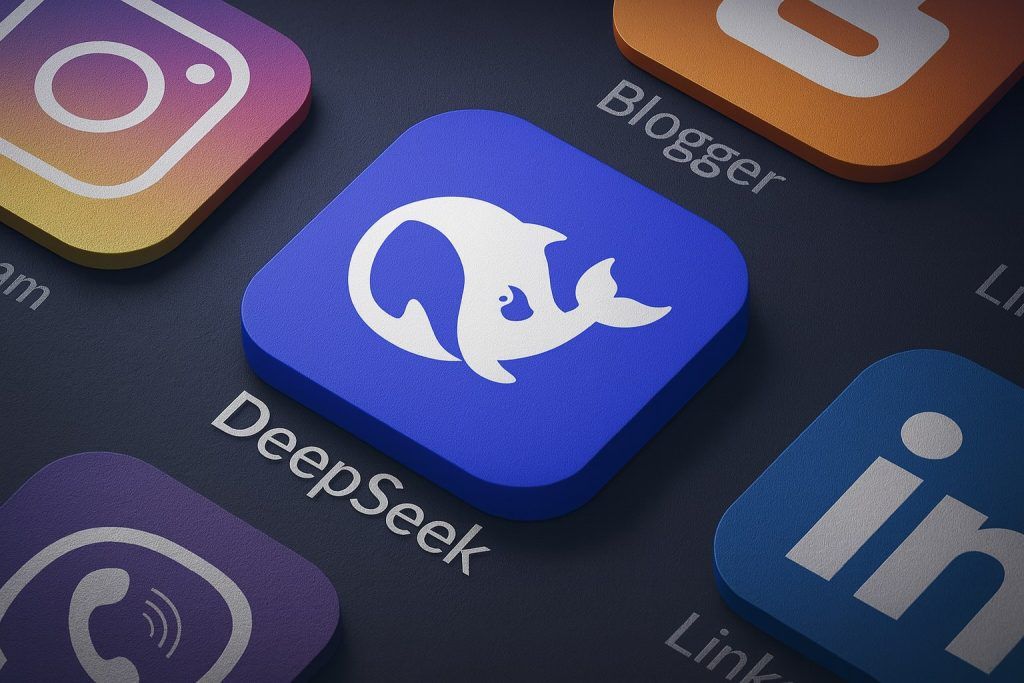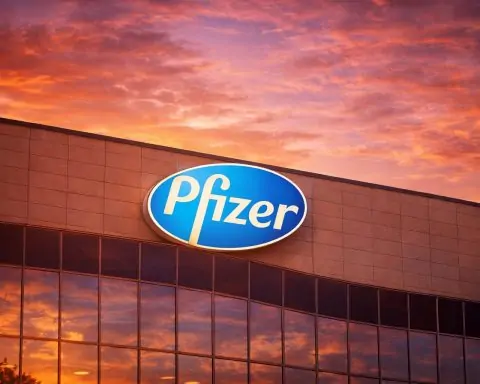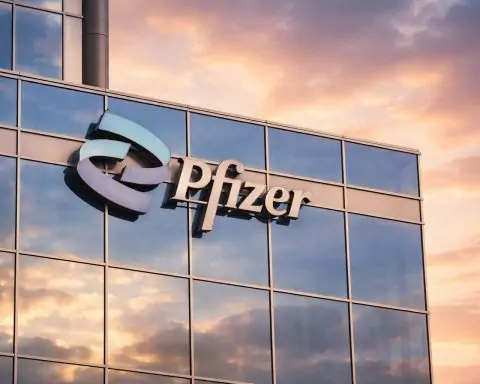- Key Facts: President Trump will announce a new government-run drug-buying website, “TrumpRx,” that lets Americans buy prescription drugs directly at discounted prices [1] [2]. The White House also secured a deal with Pfizer: the company will lower U.S. prices on several medications and invest $70 billion in domestic research and manufacturing [3] [4]. These moves are part of Trump’s “Most Favored Nation” push (his executive order and July letters to 17 big drugmakers) to tie U.S. drug costs to the lowest prices paid overseas [5] [6]. In response, the pharmaceutical industry has pledged massive U.S. investments (about $500 billion) and unveiled new direct-sales programs, including the PhRMA site AmericasMedicines.com [7] [8]. However, experts warn that forcing prices down could stifle innovation and prompt companies to raise prices abroad instead of cutting them at home [9] [10].
What Is “TrumpRx”? A Direct-to-Consumer Drug Website
“TrumpRx” is a planned federal website that will let Americans buy prescription medicines directly from the government at cash prices. According to administration officials, TrumpRx will negotiate discounted rates with drugmakers and allow patients to pay out-of-pocket for certain drugs, bypassing insurers and middlemen [11] [12]. White House Press Secretary Karoline Leavitt confirmed on social media that Trump will announce TrumpRx, and a Wall Street Journal report says the site will be branded TrumpRx [13] [14]. It is not yet clear which medications will be offered, but the idea is to force prices lower by having the government bulk-buy like a pharmacy. In effect, TrumpRx revives a concept from his first term (the aborted “American Patients First” plan) but goes further by having the government directly sell drugs.
Pharma experts note this is unprecedented: the government historically regulates prices or insurance reimbursement, not sell medicine directly. If implemented, TrumpRx would compete with private pharmacy programs. For example, in recent weeks Novartis, Novo Nordisk and other companies have launched their own direct-to-patient sales sites offering deep discounts on select drugs (such as Ozempic for $499/month) [15] [16]. TrumpRx aims to join or even undercut those by using federal buying power. A White House official told Reuters that Pfizer will even sell some drugs through the TrumpRx site [17], indicating cooperation from industry under pressure.
The Pfizer Deal: Price Cuts and $70 Billion Investment
Alongside TrumpRx, Pfizer is taking center stage in Trump’s drug-cost initiative. The administration says Pfizer will voluntarily lower U.S. prices on several of its drugs, particularly through Medicaid and direct sales programs [18] [19]. In return, Pfizer CEO Albert Bourla is unveiling a major commitment: a $70 billion pledge to boost U.S. research and manufacturing over the next decade [20] [21]. Trump plans to highlight this deal at an Oval Office event, saying it benefits patients and domestic industry. As Pfizer spokesman Kit Longley put it: “It’s a win for American patients, a win for American leadership, and it’s a win for Pfizer” because it provides stability for future innovation [22].
Press reports indicate the price cuts will mostly affect Medicaid (the government health program for the poor). A White House official told Reuters that Pfizer will “lower prices on several of its medications in the United States” and launch sales of some drugs directly through TrumpRx [23]. (A previous Reuters story similarly said Pfizer would “voluntarily sell” drugs through Medicaid at discounted prices [24].) In any case, Pfizer is the first major drugmaker to step forward with a deal, signaling that the 60-day deadline from Trump’s July letters pushed companies to the table.
Trump’s supporters praise the move as evidence he’s delivering on promises to “stop American taxpayers from subsidizing high drug costs overseas” [25] [26]. But even the Wall Street Journal notes this is a voluntary agreement – Pfizer still controls pricing, and final details (which drugs, how much cut) remain murky.
Most Favored Nation Push: Tying U.S. Prices to the World’s Cheapest
These announcements stem from Trump’s “Most Favored Nation” (MFN) initiative, aimed at making American drug prices no higher than the lowest prices in other wealthy countries. In May, Trump signed an executive order directing Health and Human Services to implement MFN pricing via regulation [27]. Earlier this summer, he sent stern letters to 17 major drugmakers (including Pfizer, Eli Lilly, J&J, Novartis, etc.), demanding they slash U.S. prices to their overseas minimums or face consequences [28] [29]. Trump gave those companies a September 29 deadline to respond.
Proponents say MFN will eliminate what Trump calls the “free ride” that other countries get on American innovation. As he put it, “We pay much higher for drugs than the rest of the world… We’re not doing that anymore and that’s a big thing.” [30]. In practice, MFN could require manufacturers to give Medicaid (and potentially Medicare or other insurers) the same low price they charge abroad for identical drugs [31] [32].
However, implementation has legal hurdles. A similar MFN rule was finalized in 2020 under Trump’s first term (targeting Medicare Part B), but courts blocked it on technical grounds [33]. The Biden administration rescinded it in 2021, arguing it threatened drug supplies. Observers say Trump’s current gambit is built on voluntary deals to avoid lawsuits – companies “agreeing” to cuts rather than being forced by new law. The Reuters reporting emphasizes all deals so far are voluntary: Pfizer’s price cuts and $70B investment come after pressure and negotiation, not new legislation [34] [35].
Pharma Industry Response: Investments and New Websites
Facing Trump’s ultimatum, the pharmaceutical industry has rolled out its own efforts to ease political pressure. The trade group PhRMA announced on Monday that its members will pour about $500 billion into U.S.-based drug manufacturing and infrastructure over the next decade [36]. It also is launching a new website, AmericasMedicines.com, in January to help patients find lower-cost options by listing drugmakers’ direct-to-patient programs [37] [38]. This industry site will function as a one-stop portal to cash-price purchase programs many drugmakers already offer to bypass insurance markups.
Big pharma has also introduced its own cash-only sales channels. For example, Novartis last week announced a direct-patient portal for its psoriasis drug Cosentyx, offering it at 45% off list price (55% discount for employers) to cash-paying Americans [39]. Novo Nordisk made Ozempic and other diabetes drugs available for $499 per month through its NovoCare Pharmacy (versus roughly $1,000 list price) [40]. These moves echo Trump’s demand that drugmakers create direct-purchase options. In fact, some firms had already taken such steps: AstraZeneca and Bristol Myers Squibb, for instance, recently told the WSJ they would let patients buy certain drugs directly, skipping insurers [41].
By contrast, Trump’s announcement adds a government-run marketplace to the mix. If TrumpRx launches, it will likely list some of the drugs these companies are already selling directly, perhaps under even lower price guarantees. Pfizer’s participation — selling its own drugs on TrumpRx — suggests at least one major company is willing to play ball under the new system [42].
Warnings and Criticisms: Innovation and Shifting Costs
Policy experts and industry critics caution that aggressive price controls carry risks. Pharmaceutical lobbying group PhRMA warned that importing foreign price controls “would undermine American leadership, hurting patients and workers,” and vice president Alex Schriver reiterated that point this week [43]. Echoing that, industry analysts note Trump’s threat to “slashing prices by 1,500%” is mathematically impossible and that extreme cuts could stifle drug innovation [44].
Economists warn companies may not actually lower U.S. prices in the way Trump demands. In some cases they appear to be doing the opposite: raising foreign prices so that the U.S. no longer looks so high in comparison. For example, Eli Lilly announced plans to hike the list price of its weight-loss drug Mounjaro in the U.K. (and Europe) as a trade-off for a lower U.S. price [45]. Bristol Myers Squibb likewise said it will charge the same high price for its schizophrenia drug CofenOnthly in the U.K. as in the U.S., rather than lowering the U.S. price [46]. These maneuvers allow companies to comply with the letter of MFN by matching U.S. prices abroad, but leave Americans still paying high dollar figures.
Drug pricing experts also note Trump’s authority is limited. The president cannot by executive order directly force companies to set global prices – previous MFN rules were blocked by courts. And without an act of Congress, any new regulations would likely be tied up in legal challenges [47] [48]. Sen. Bernie Sanders (I-Vt.) pointed out that even after Trump’s letters, “prescription drug prices keep increasing” [49], suggesting voluntary measures and tough talk alone may not immediately lower costs.
Finally, some Democrats and healthcare advocates criticize the approach’s political framing. They agree drug prices are too high, but argue forcing MFN without legislation or broader healthcare reform is unilateral and risky. They also note that middlemen (pharmacy benefit managers) and other factors drive up prices, which TrumpRx does not address.
Background: Trump’s Drug-Pricing Campaign
Trump’s announcement is the latest salvo in a long-running crusade against drug costs. In his first term he touted the same MFN concept and even threatened similar tariffs and importation schemes, but ultimately few policy changes survived legal scrutiny. This year he has doubled down by using tariffs as leverage – in late September he announced 100% tariffs on patented pharmaceuticals imported from countries other than the U.S. unless the maker is actively constructing a U.S. plant [50] [51]. (The new deal with Pfizer explicitly comes after the company said it would build a U.S. factory, thus avoiding the tariff.)
Trump’s tactics blend executive orders, public pressure, and back-channel deals. Over the summer he dispatched cabinet members and wrote to CEOs demanding action, threatening to “deploy every tool in our arsenal” on October 1 if no voluntary cuts materialized [52] [53]. With the deadline passed, the Trump administration is rolling out the first concrete agreements it secured — starting with Pfizer — and unveiling TrumpRx as a demonstration of how he intends to “walk the walk” on drug pricing [54] [55].
The question now is whether these measures will genuinely bring relief at the pharmacy. In theory, paying the lowest global prices could dramatically cut U.S. costs: a Department of Health & Human Services study found Americans pay about three times what other nations do for the same prescriptions [56]. But in practice, the deals are modest so far, and history suggests such sweeping reforms (if ever enacted) tend to take years. For now, patients and investors will be watching Tuesday’s announcements as a high-stakes moment in Washington’s ongoing battle over drug prices.
Sources: Wall Street Journal (via [Pharmaceutical Executive] [57]), Washington Post [58] [59], CNN [60] [61], Reuters [62] [63], Newsweek [64], and others.
References
1. ktvz.com, 2. www.wbtv.com, 3. www.reuters.com, 4. www.reuters.com, 5. www.reuters.com, 6. ktvz.com, 7. www.reuters.com, 8. ktvz.com, 9. ktvz.com, 10. www.reuters.com, 11. www.wbtv.com, 12. www.reuters.com, 13. www.newsweek.com, 14. www.reuters.com, 15. ktvz.com, 16. www.reuters.com, 17. www.reuters.com, 18. www.reuters.com, 19. www.reuters.com, 20. www.reuters.com, 21. www.washingtonpost.com, 22. www.washingtonpost.com, 23. www.reuters.com, 24. www.reuters.com, 25. www.washingtonpost.com, 26. www.washingtonpost.com, 27. www.reuters.com, 28. www.reuters.com, 29. ktvz.com, 30. www.washingtonpost.com, 31. ktvz.com, 32. ktvz.com, 33. ktvz.com, 34. www.reuters.com, 35. www.reuters.com, 36. www.reuters.com, 37. www.reuters.com, 38. ktvz.com, 39. www.reuters.com, 40. ktvz.com, 41. www.axios.com, 42. www.reuters.com, 43. ktvz.com, 44. ktvz.com, 45. ktvz.com, 46. ktvz.com, 47. ktvz.com, 48. www.reuters.com, 49. www.washingtonpost.com, 50. ktvz.com, 51. www.reuters.com, 52. www.reuters.com, 53. www.reuters.com, 54. www.washingtonpost.com, 55. ktvz.com, 56. www.reuters.com, 57. www.pharmexec.com, 58. www.washingtonpost.com, 59. www.washingtonpost.com, 60. ktvz.com, 61. ktvz.com, 62. www.reuters.com, 63. www.reuters.com, 64. www.newsweek.com
